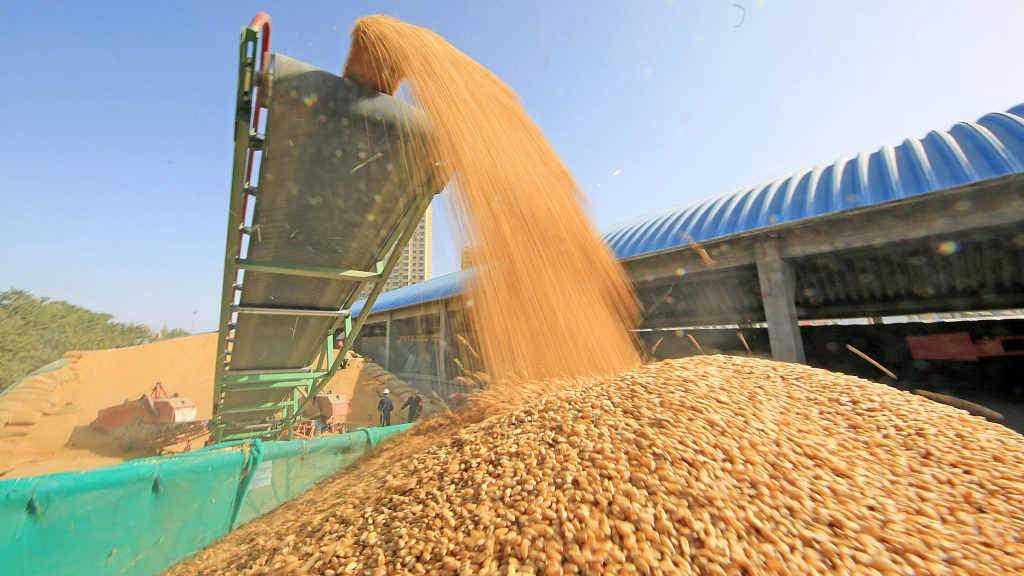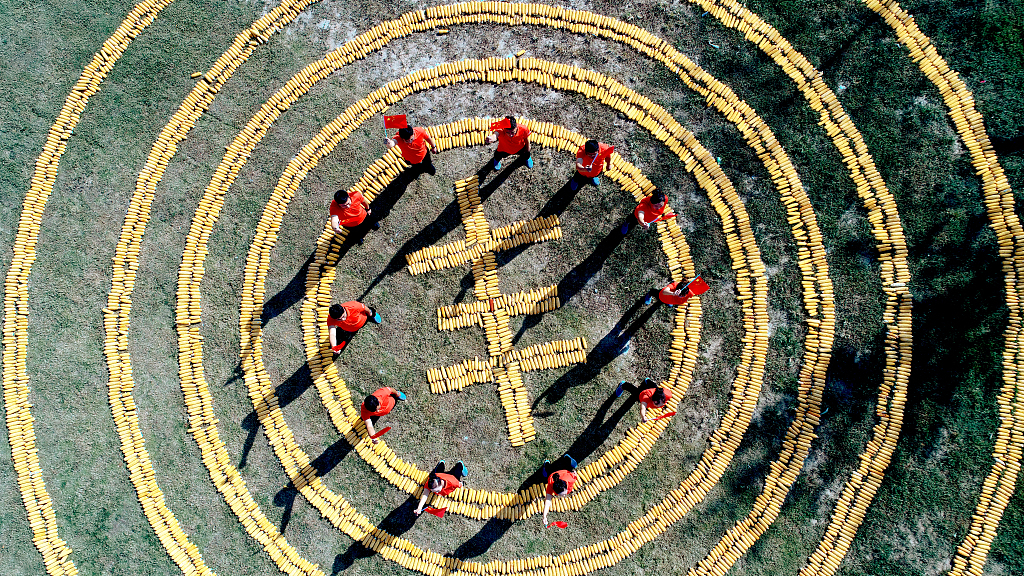
Editor's note: Liu Baocheng is the director of the Center for International Business Ethics at the University of International Business and Economics. The article reflects the author's opinions, and not necessarily the views of CGTN.
September 23 marks the second Chinese Farmers' Harvest Festival. It is held for the purpose of not only reviving China's long-lasting tradition of farming, but also for adding new meaning to Chinese agriculture in the contemporary social, economic, ecological and global context.
It's already a miracle that China as the most populous nation on the planet is able to keep stomachs fed, not to mention the rich delicacies on meal tables.
As an ancient civilization that has survived and thrived along the Yellow River and Yangtze River, the supply of food has been always the precondition to maintaining the nation's enormous population, hence the household proverb – food is heaven for all the populace. That explains why nothing is more worthy of celebration than a bumper harvest.
Chinese farming can be traced back to the new Stone Age where millet and rice were grown respectively in the mid-reaches of Yellow River and Yangtze River. For 3,000 years, farming was also the prime source of tax revenue for Chinese dynasties.
Under the notion that "populace is the heaven of rulers," worship and sacrifice to the sky and earth praying for bumper harvest were regarded as the paramount ritual for all royal emperors, a legacy witnessed by the Temple of Heaven and the Temple of Earth in Beijing and other major cities.
For thousands of years, the concentration of land in the hands of a few local landlords did not yield productivity since the large labor force was cheaper than cattle, rendering mechanical operation unnecessary.
Even at the best of times, farmers toiling on land could only manage a life of hand to mouth after paying all the rent to landlords and tax to the government.
Such gross distributional injustice led to a cycle of uprisings followed by massive suppression until the farmers' revolution led by the Communist Party successfully dismantled the landlord system and redistributed land to individual households in the 1940s.
Collectivization of rural production factors in the early 1950s under the people's commune after the founding of the People's Republic of China made it possible for scale operation in the agricultural industry. Unfortunately, mandatory planning emulating the Soviet system failed to incentivize farmers.
In addition, when excessive priority was placed on the development of heavy industry across the country, the mode of cultivation was still largely reliant on manual labor.
At the end of the 1970s, the then Chinese leader Deng Xiaoping introduced the household responsibility system by which virtually all arable land was de-collectivized to individual households. Agricultural productivity surged when farmers were able to relate their hard work to farm yields.

People celebrate Chinese Farmers' Harvest Festival in Shangqiu, China's Henan Province, September 23, 2019. /VCG Photo
People celebrate Chinese Farmers' Harvest Festival in Shangqiu, China's Henan Province, September 23, 2019. /VCG Photo
At the beginning of 2006, farmers were overjoyed at the elimination of the agricultural tax that had loomed for 2,000 years. Nonetheless, notwithstanding the continued motivation, household operations on small plots placed restrictions on the introduction of mechanization and modern farming technology.
Rural China also faced a labor drain due to massive migration among the labor force to work in assembly lines in coastal cities.
To meet the emergent challenges, the Chinese government in recent years has unfolded a slew of effective measures to invigorate the rural economy and improve farmers' quality of life. One decisive measure is infrastructure development.
Targeted poverty alleviation is also another approach which is not about pouring money, but rather to develop human capacity with new farming skills and promote linkages to the marketplace aided by the booming e-commerce.
Besides, measures such as land in individual households that are allowed to change hands for the formation of enlarged farms, plows and sickles which are given to power-driven seeders and harvesters, special programs that are devised to channel financial support to rural entrepreneurship and micro-businesses, etc., have all contributed to a new paradigm of urbanization emerging in towns and mini-cities began to replace those stifled villages.
A new model of agricultural value chain, therefore, is taking shape – from continuous innovation of seed banks – most notably productive hybrid rice by China Engineering Academy – to cooperative farming, from dispersion of modern farming tools to intensive food processing.
Currently, China has to dance on parallel bars. One is to boost agricultural productivity while preserving rural ecology by preventing excessive use of pesticides and chemical fertilizer. The other is to maintain a reasonable level of self-sufficiency while engaging international trade on the merit of comparative advantage.
The ongoing trade tension with the United States which is a major source of agricultural produce such as maize, soybeans and cotton, rings the alarm for China to deepen its rural reform for higher yields and to diversify its food supply around the world.
(If you want to contribute and have specific expertise, please contact us at opinions@cgtn.com.)